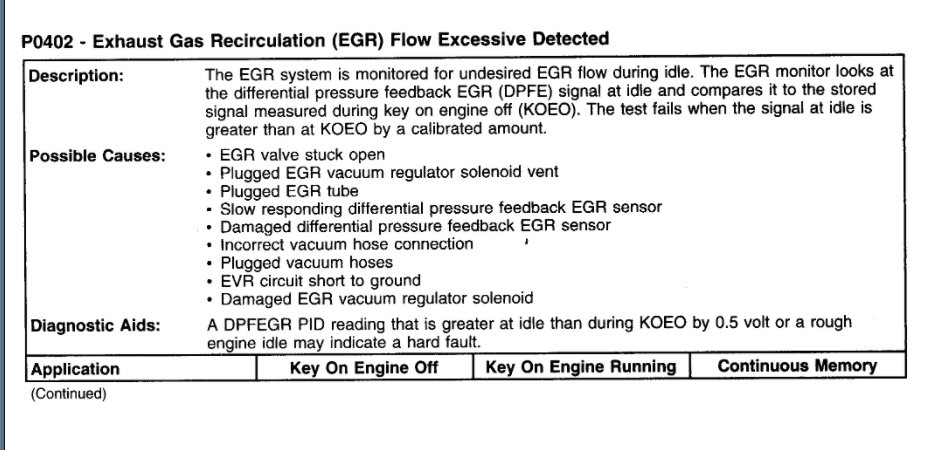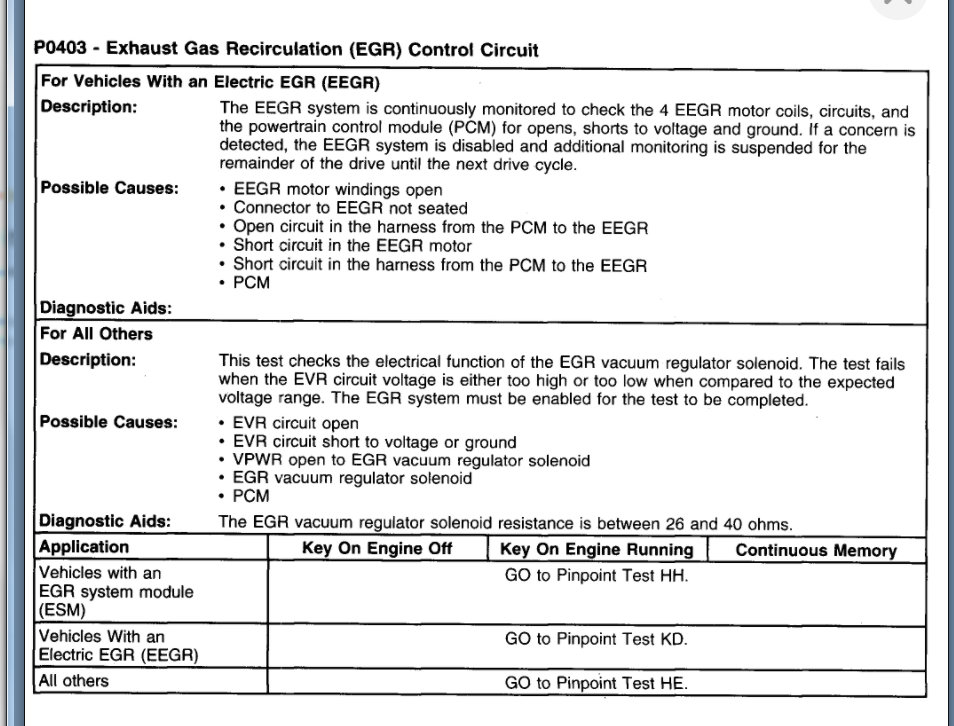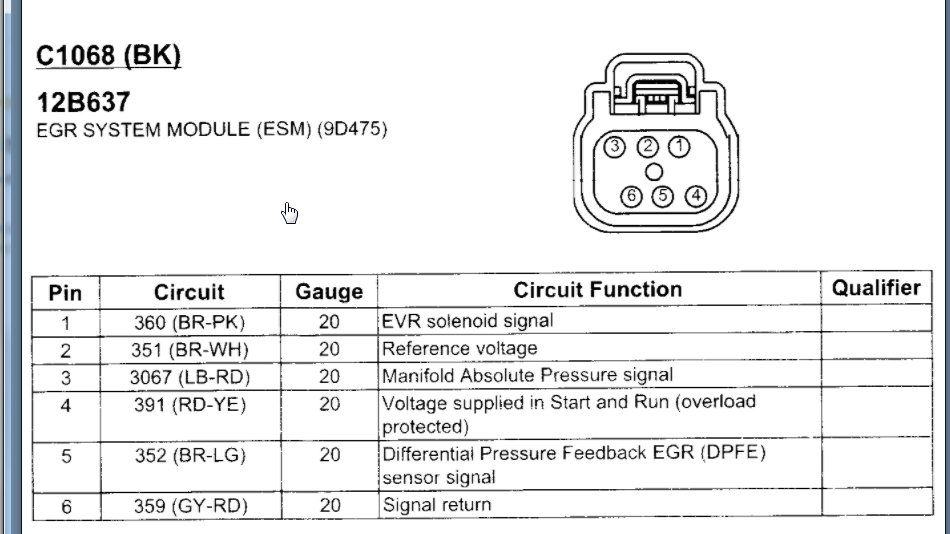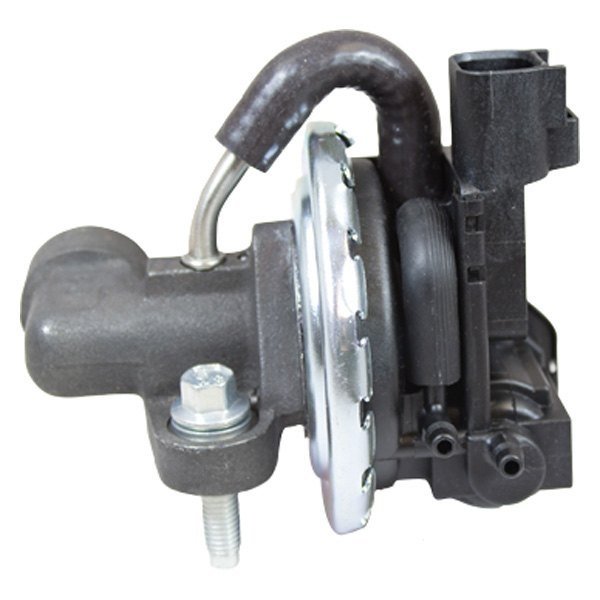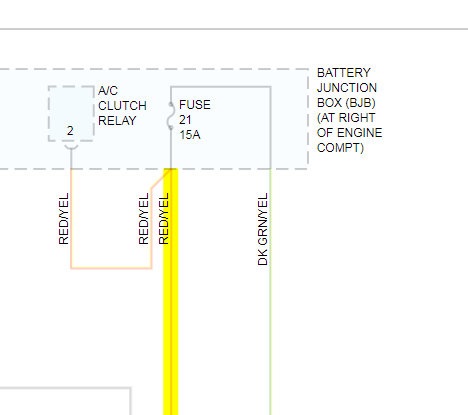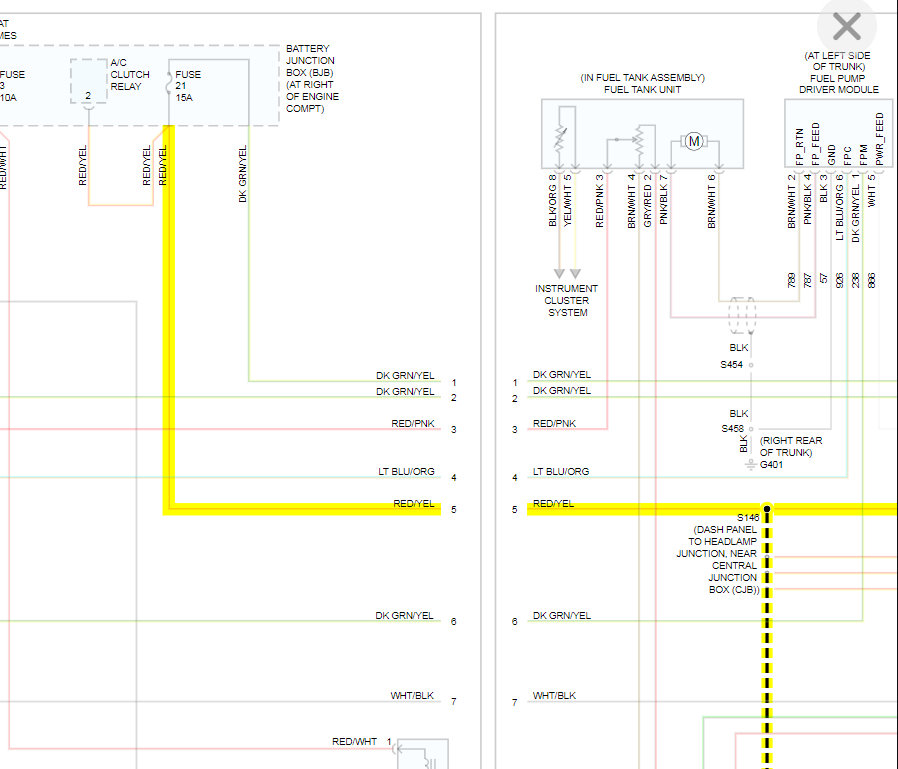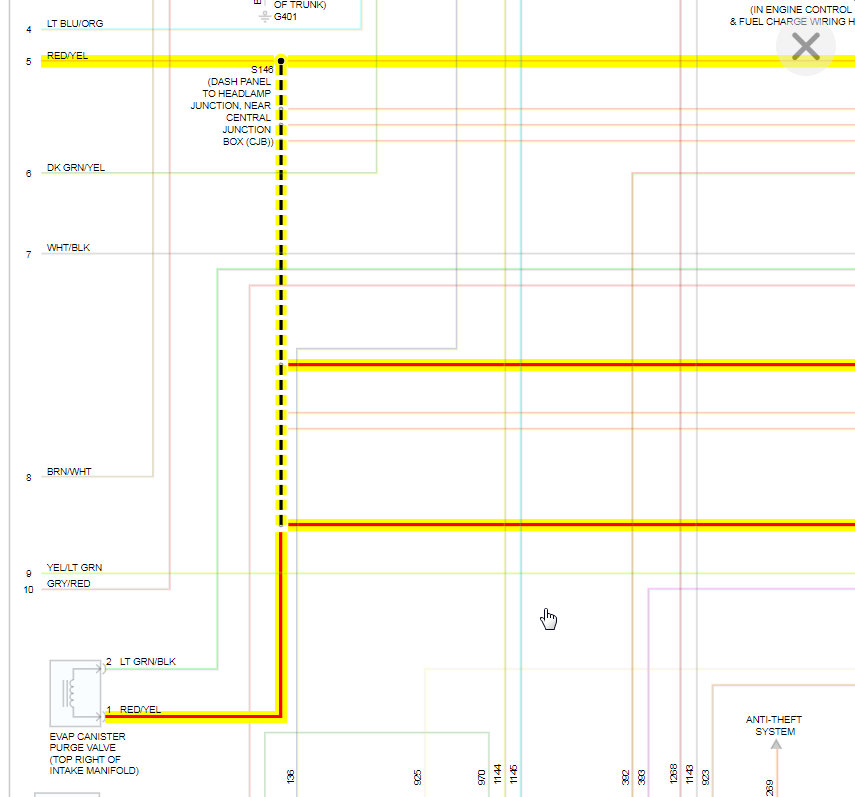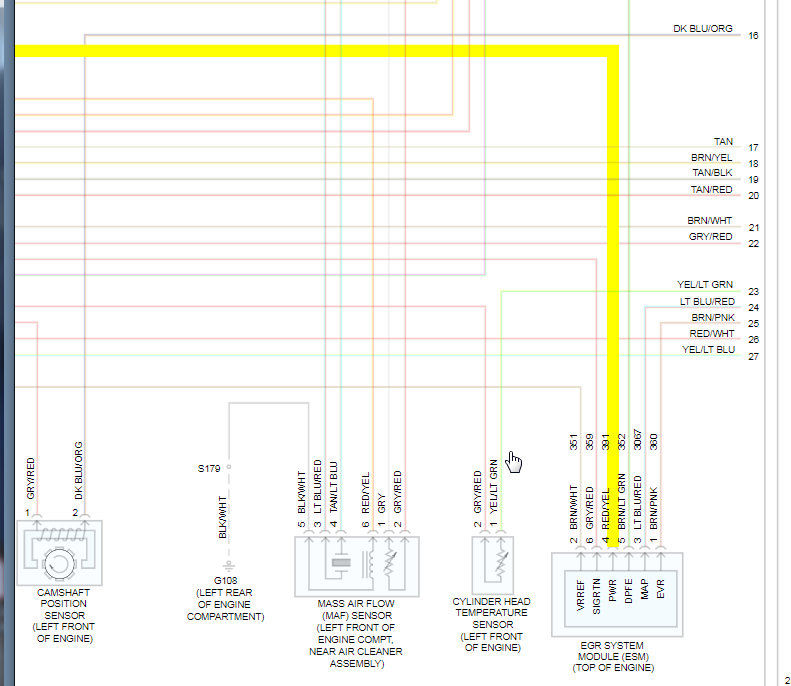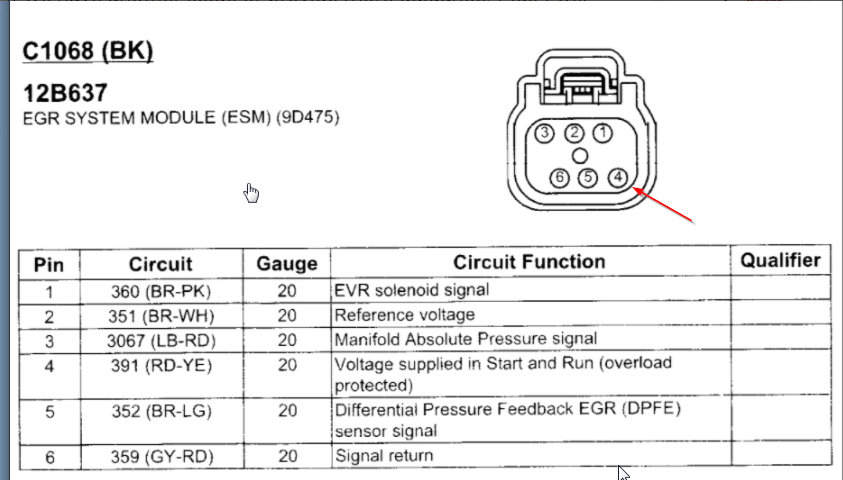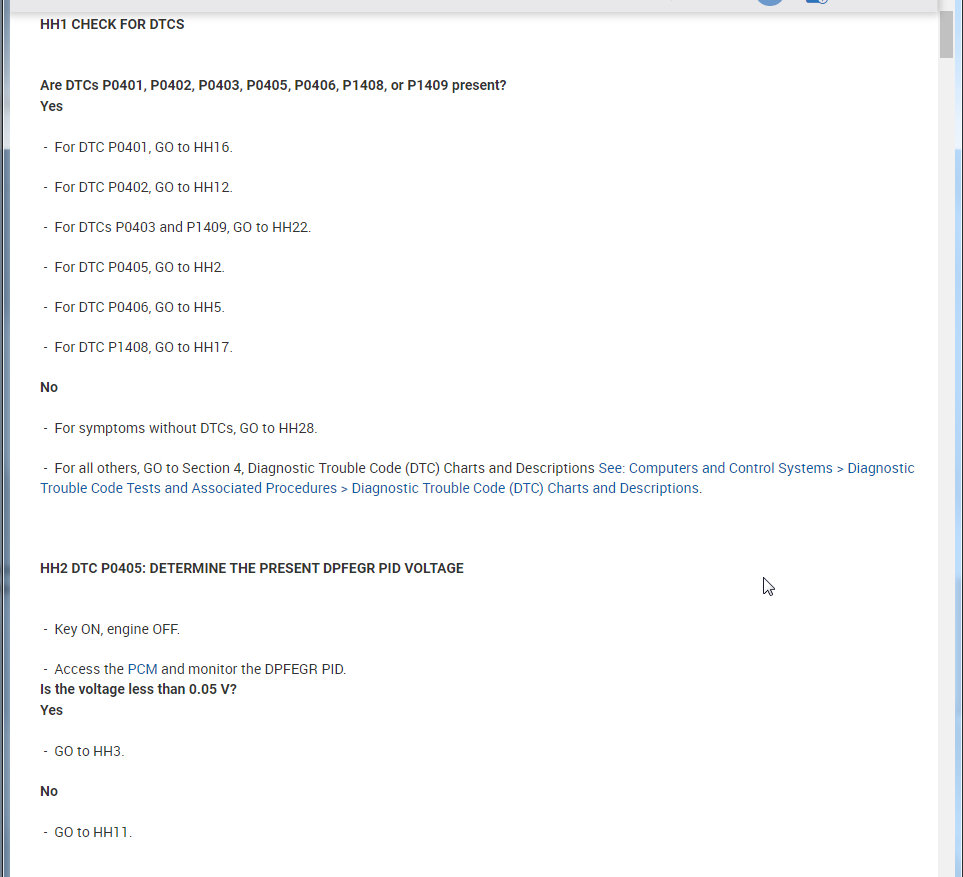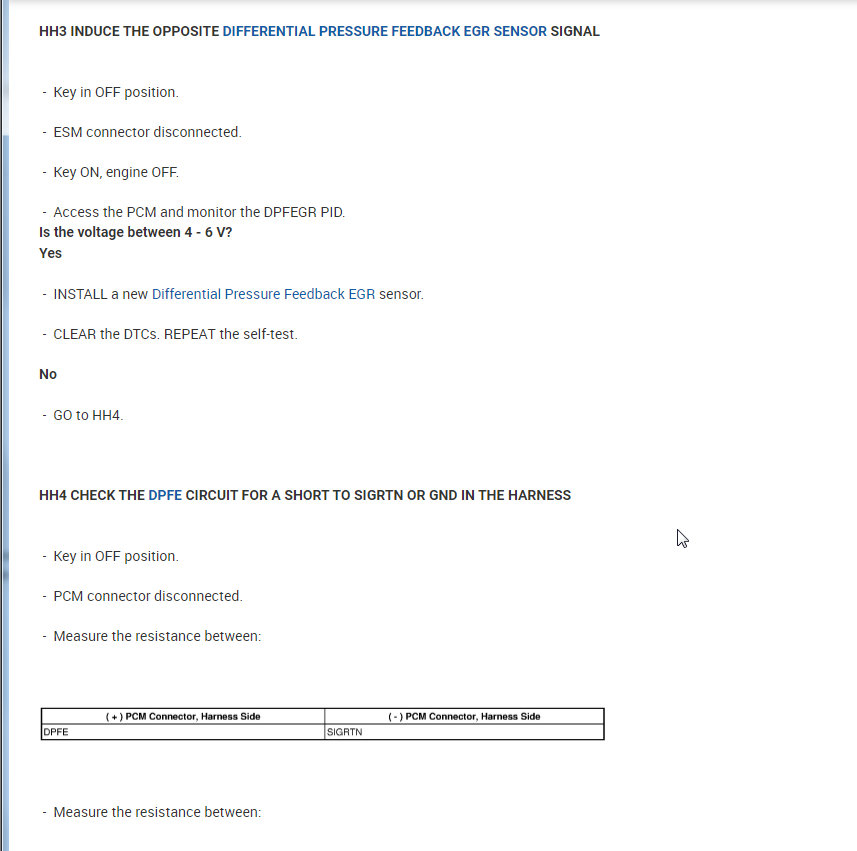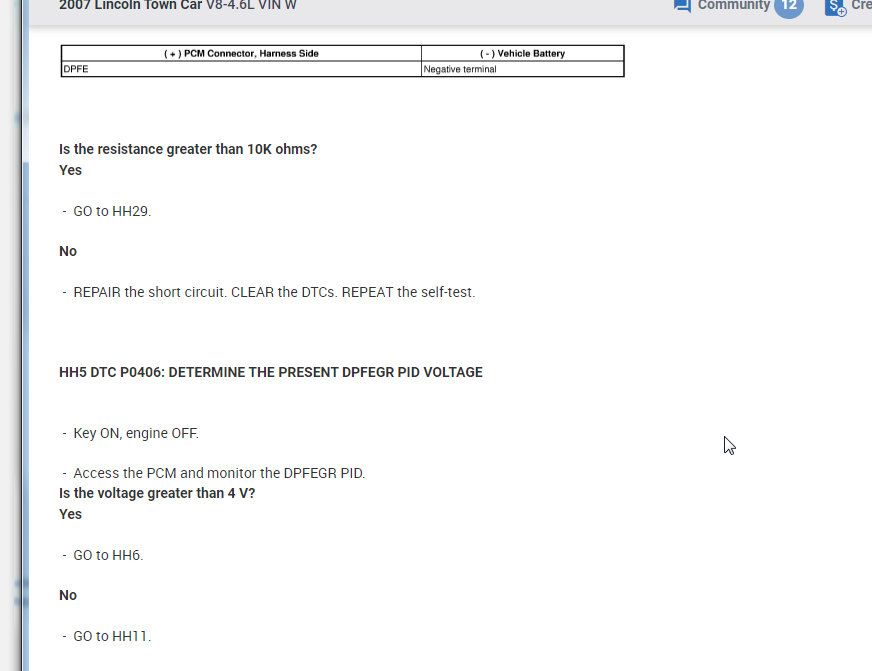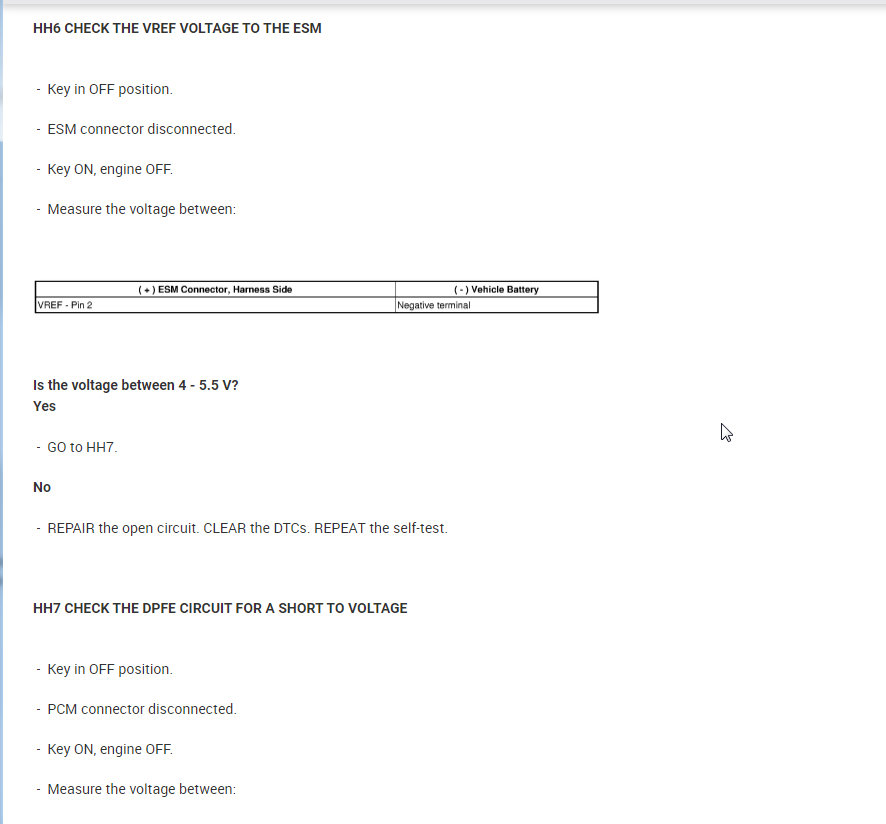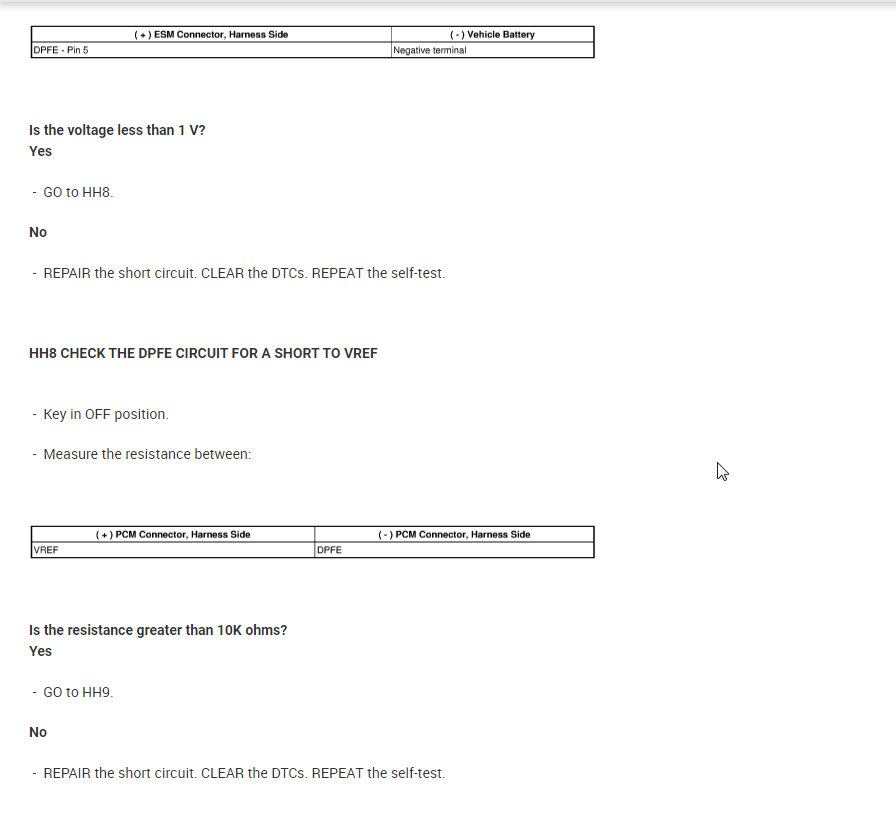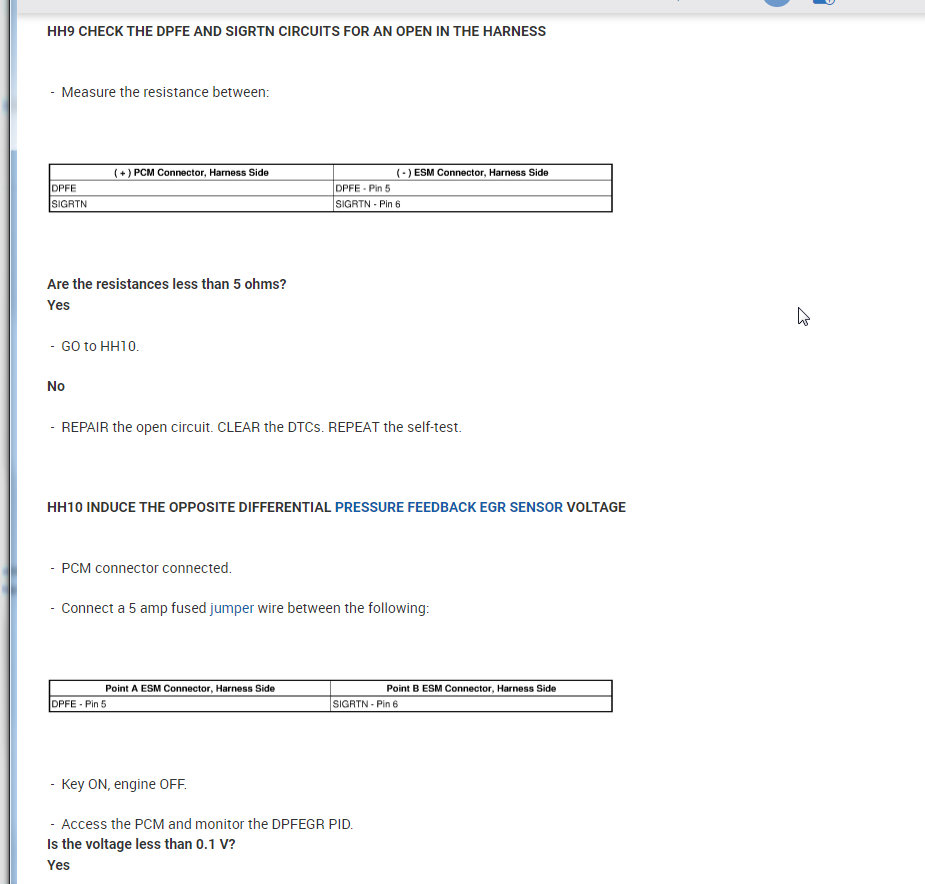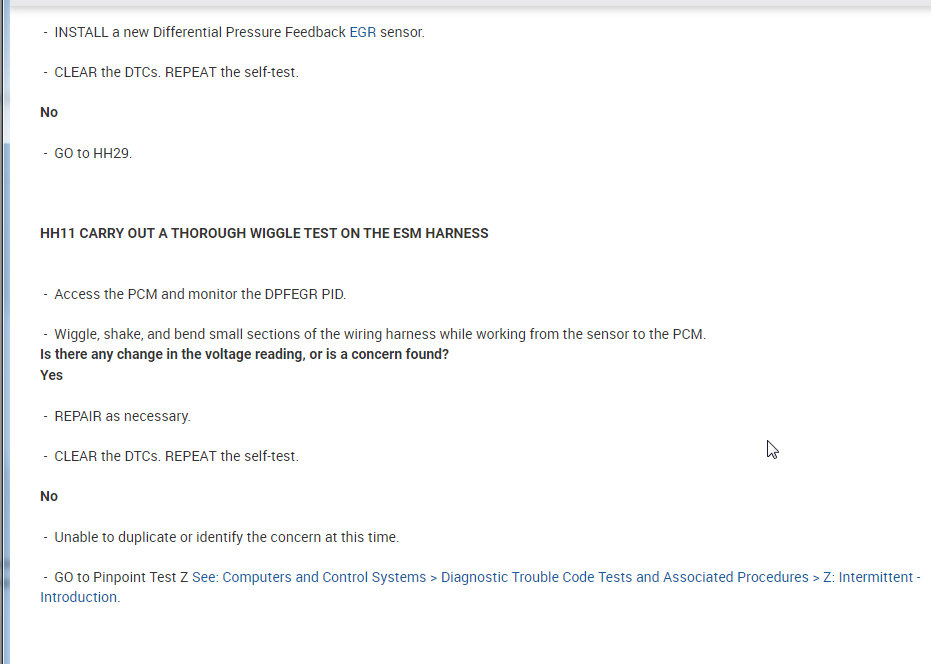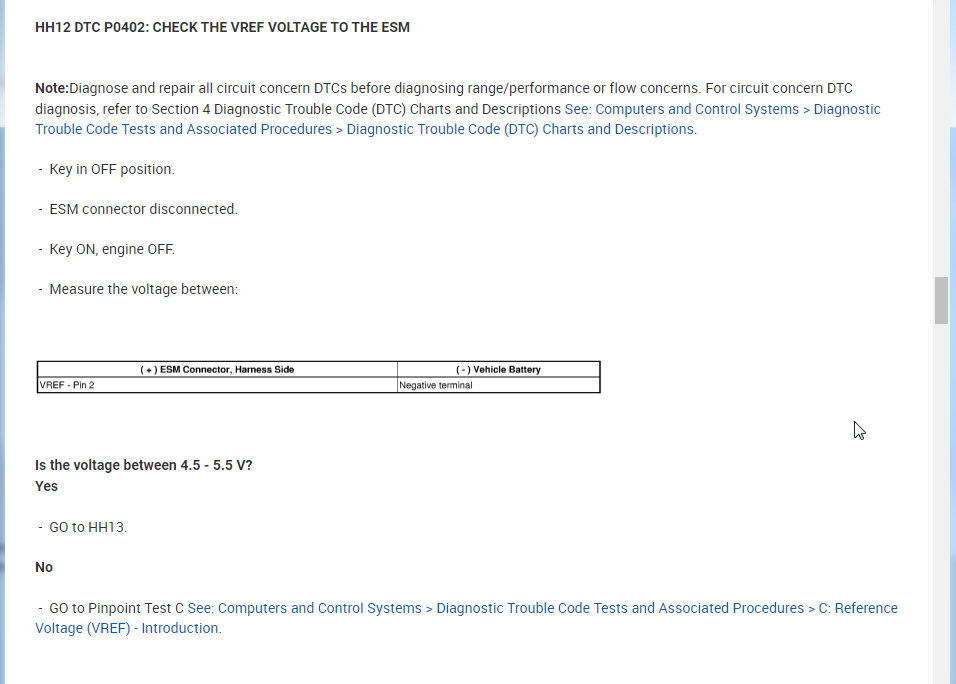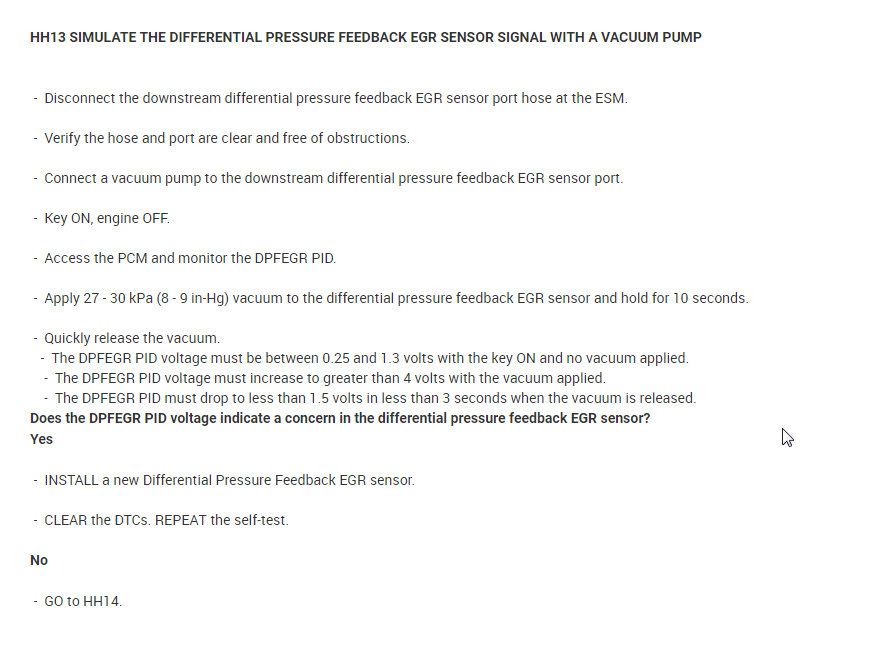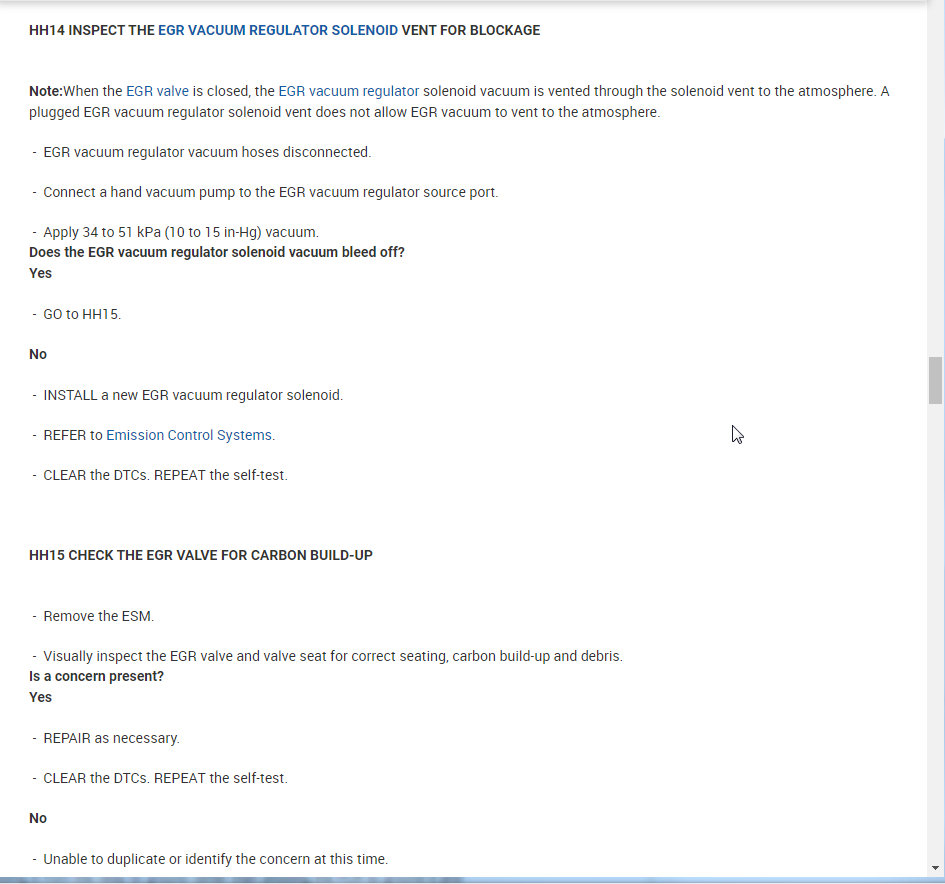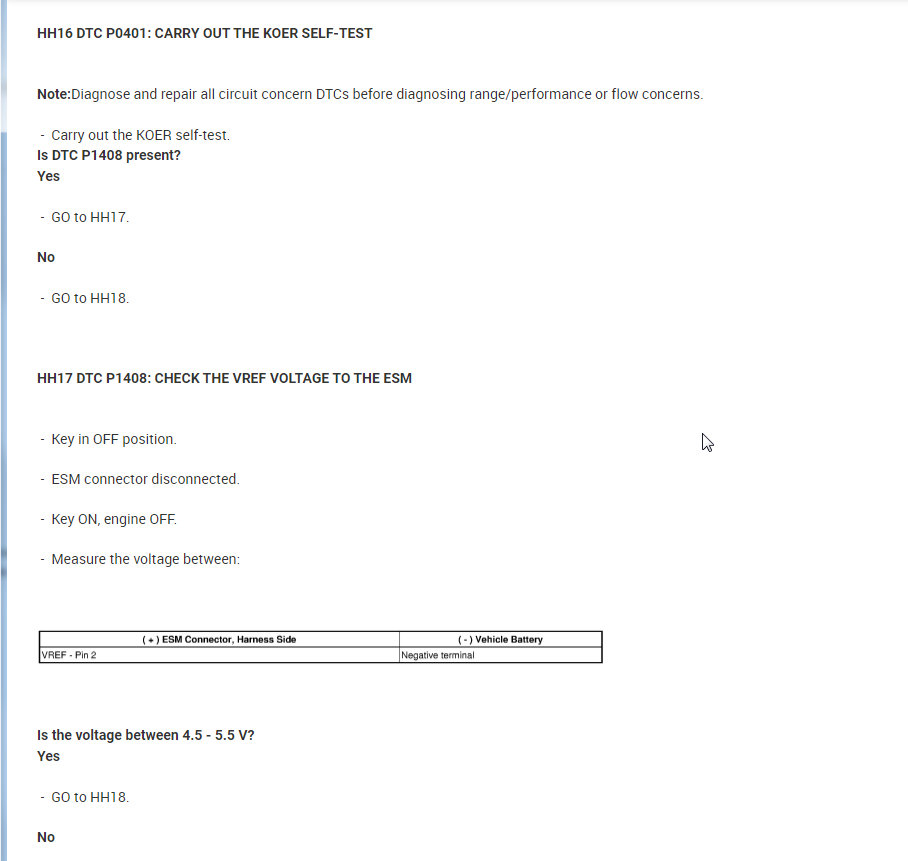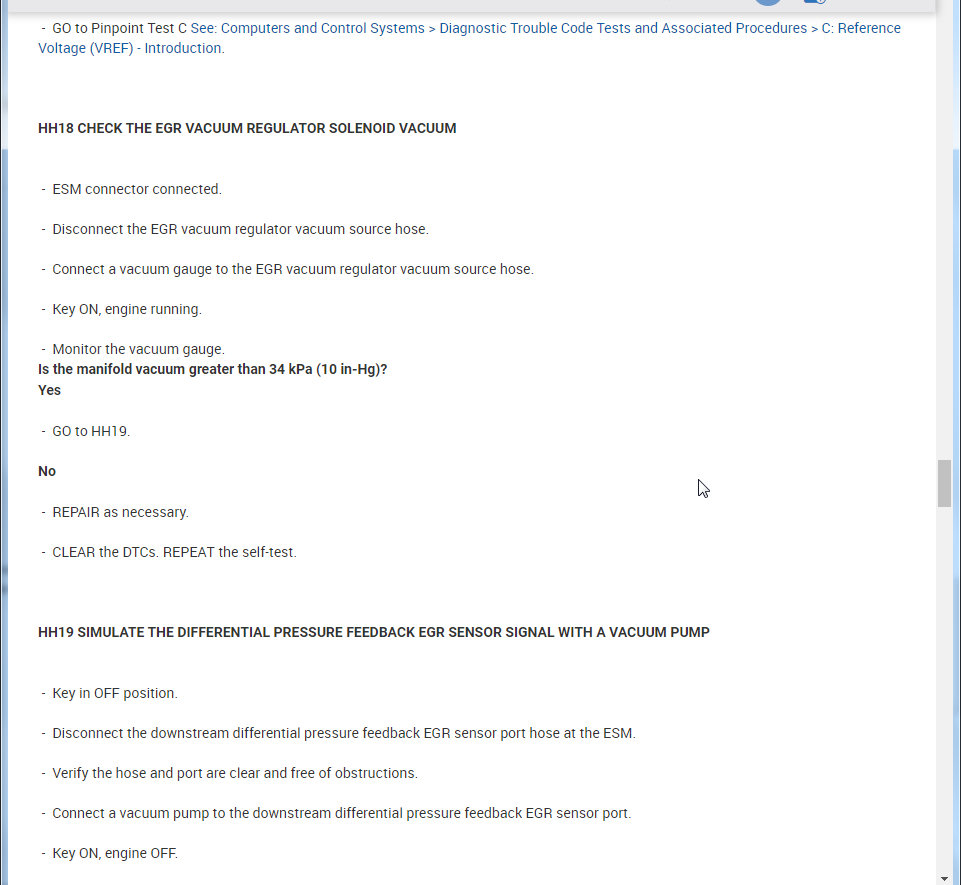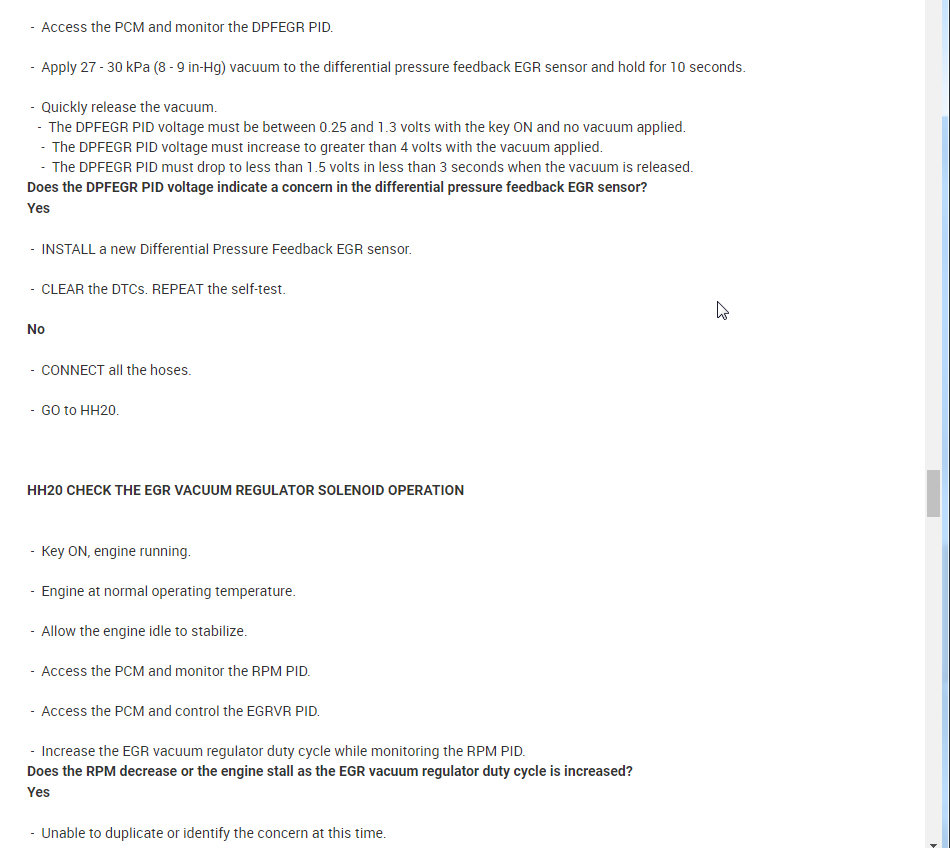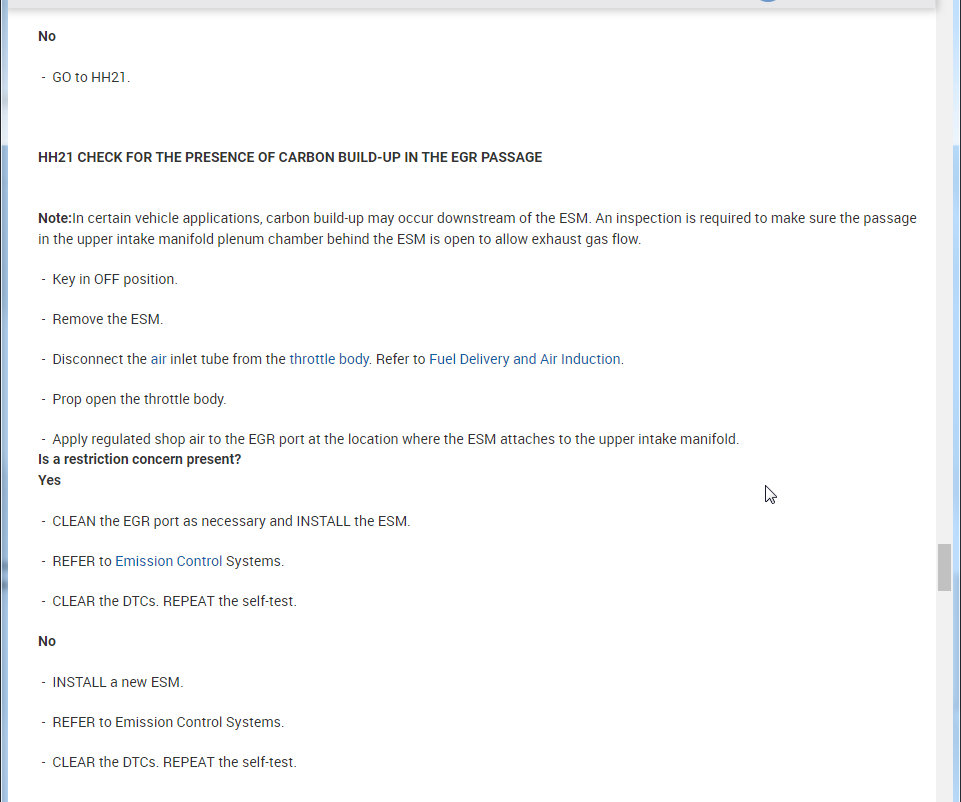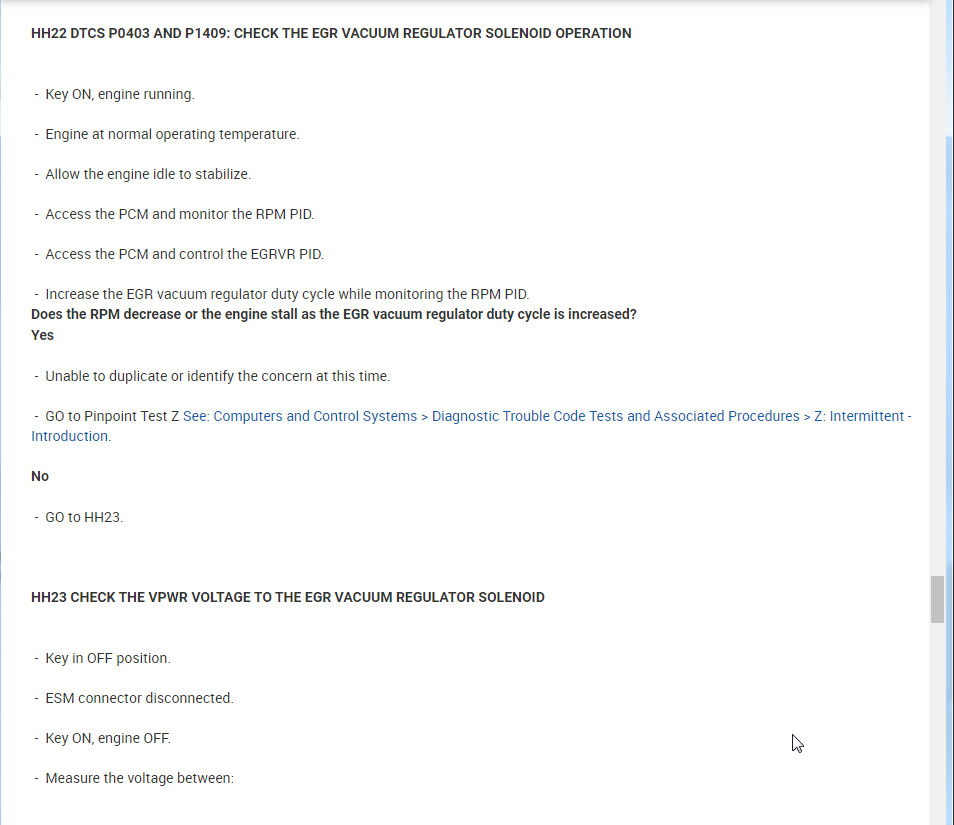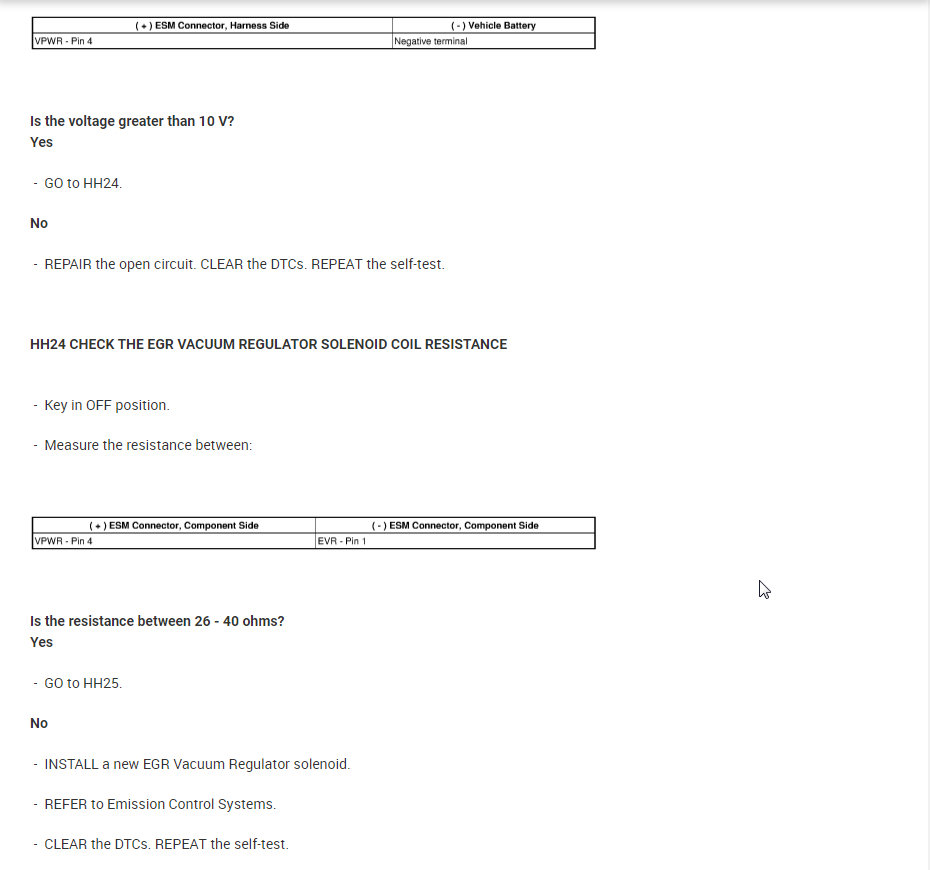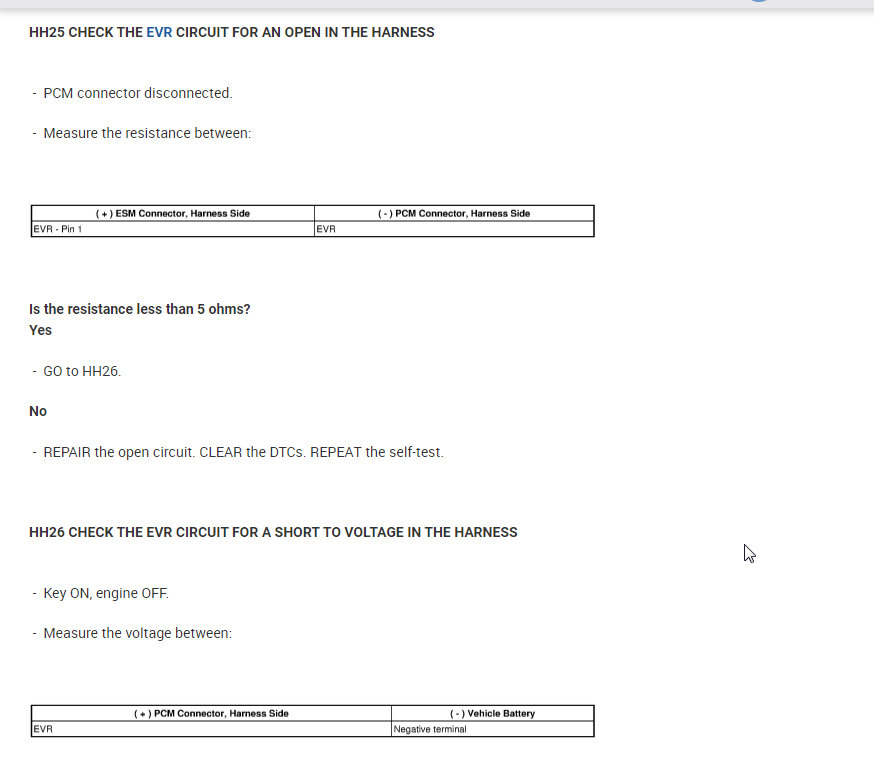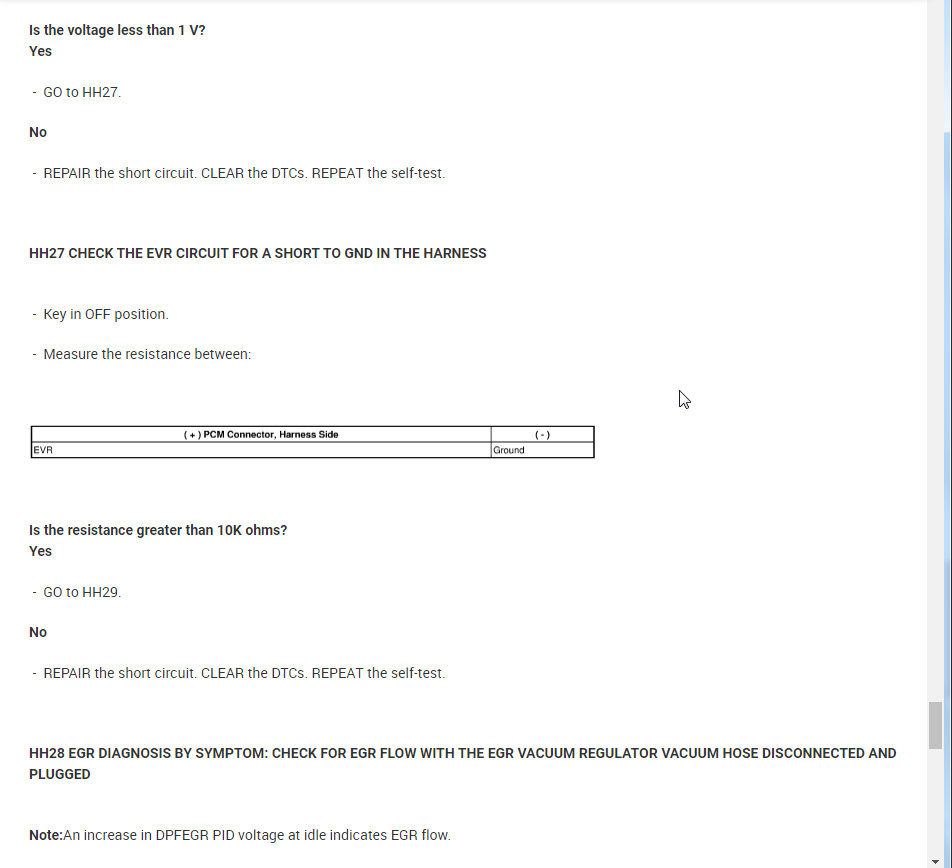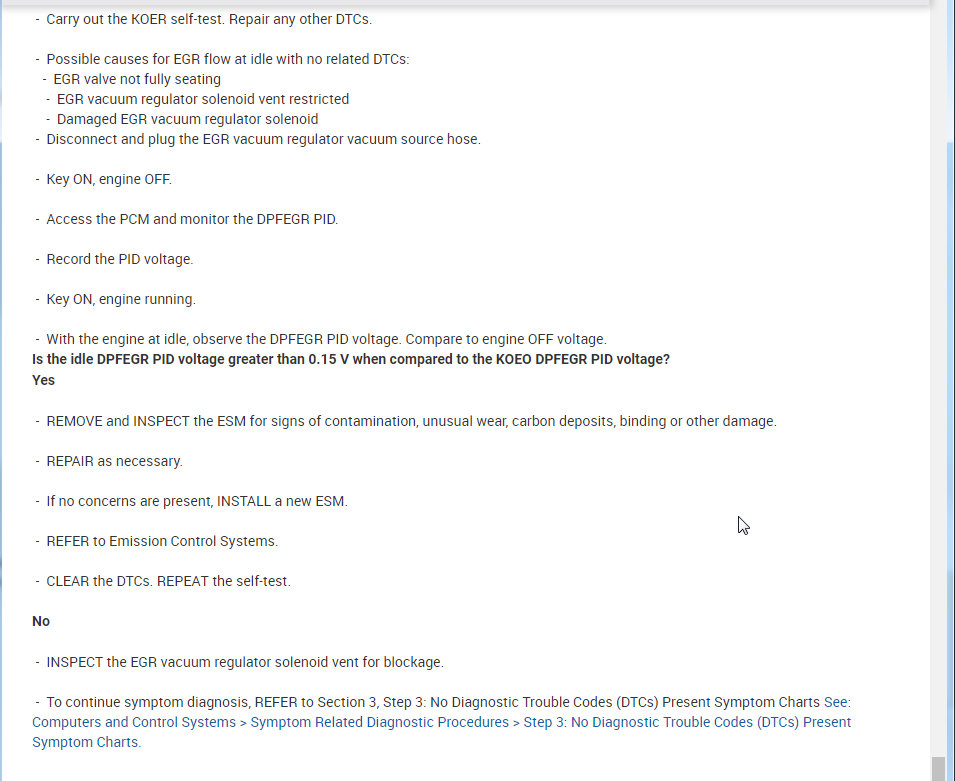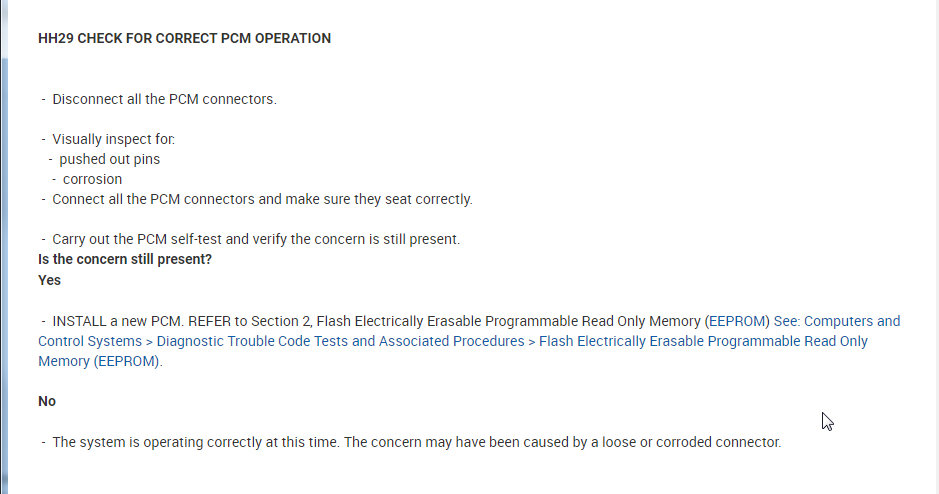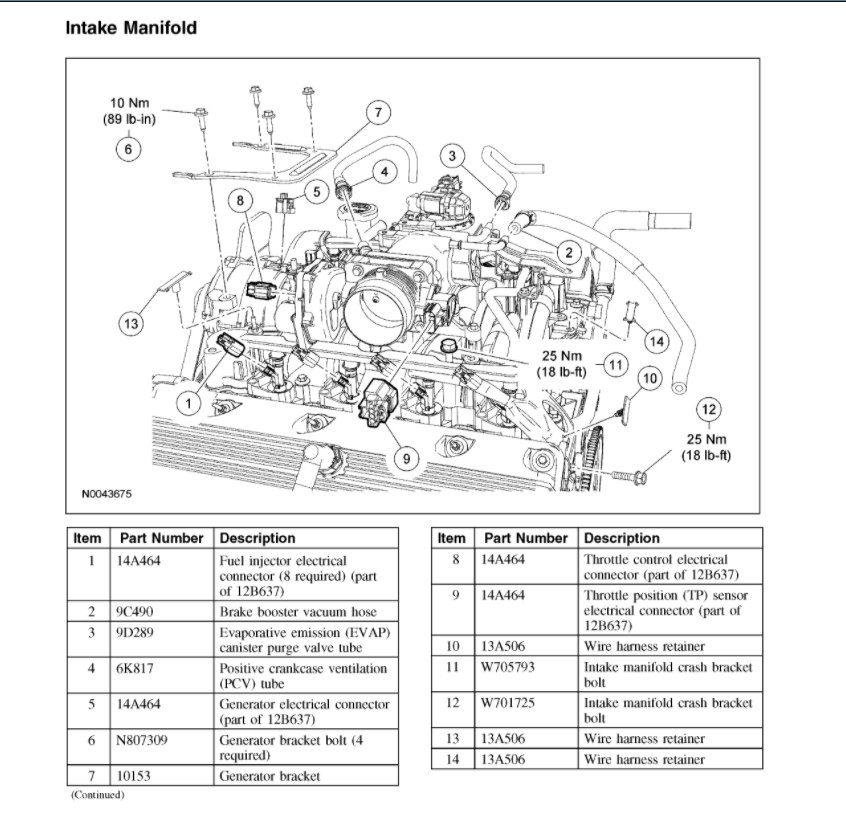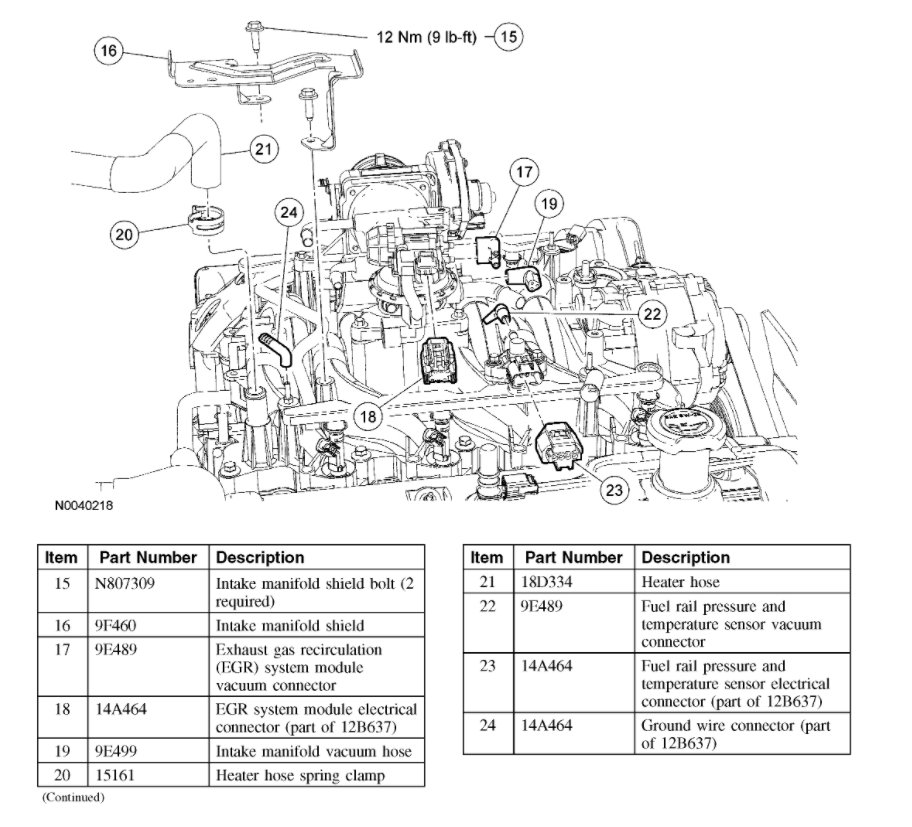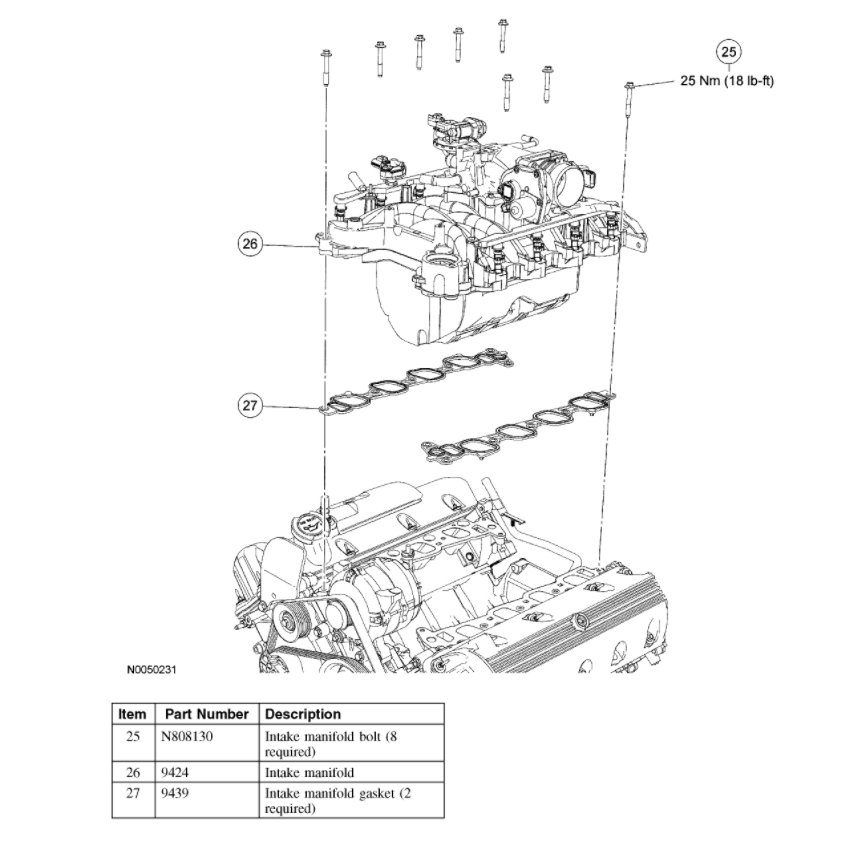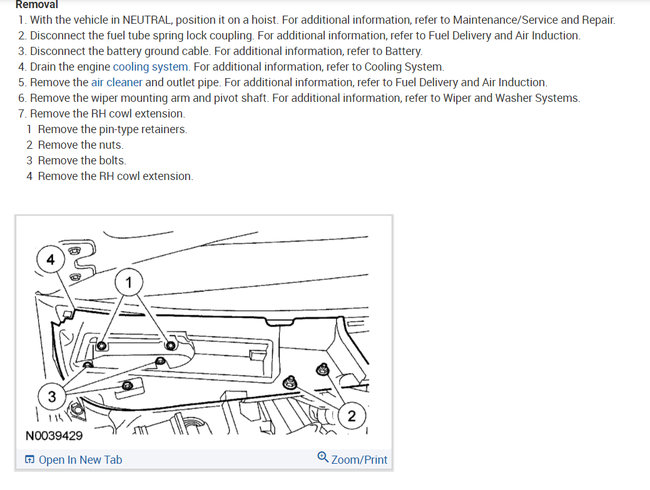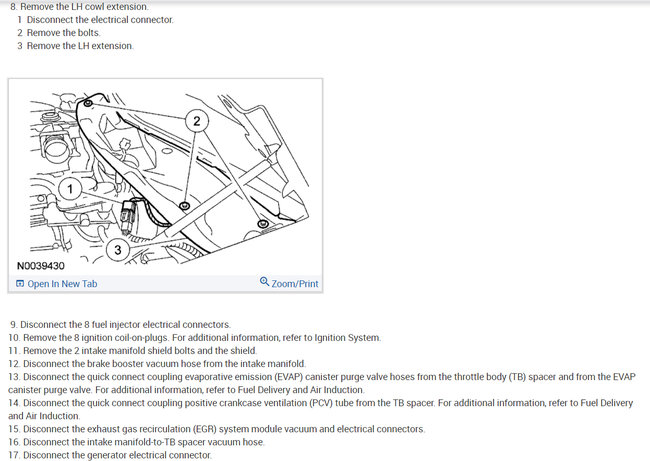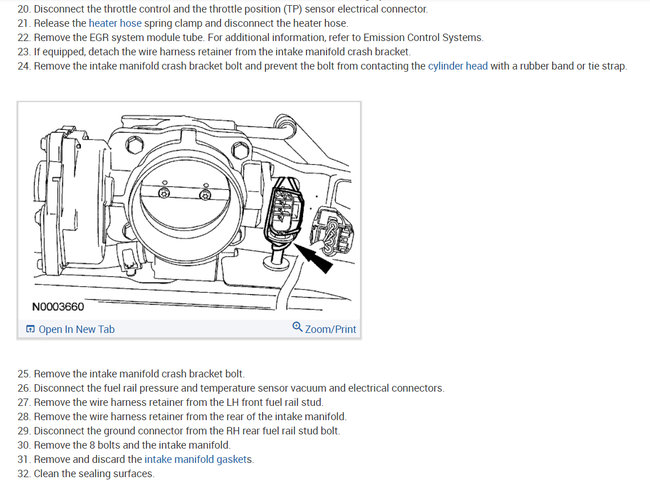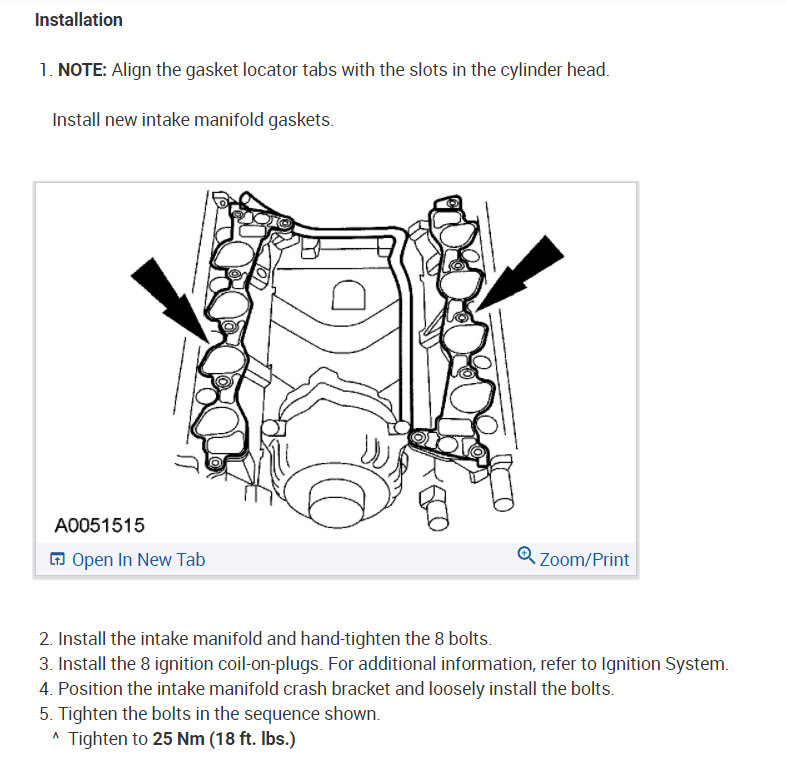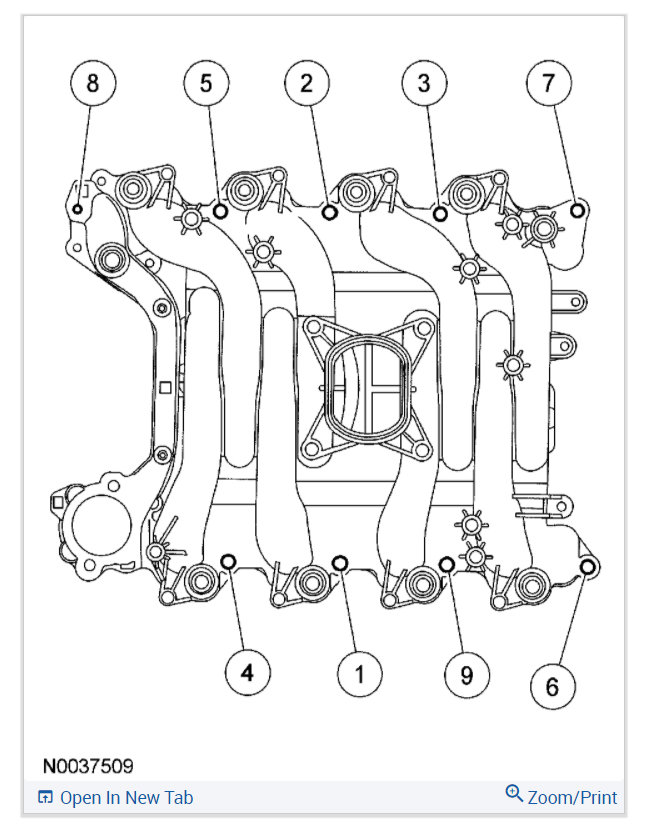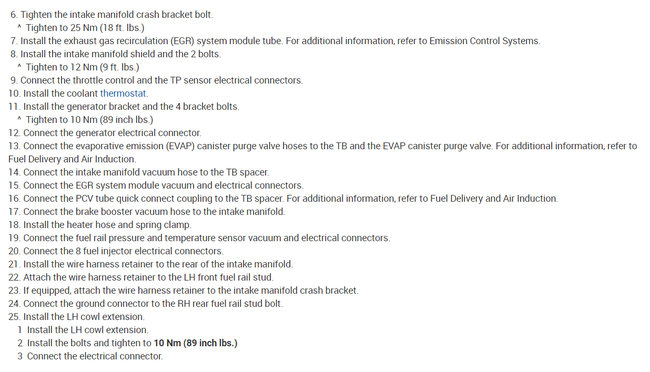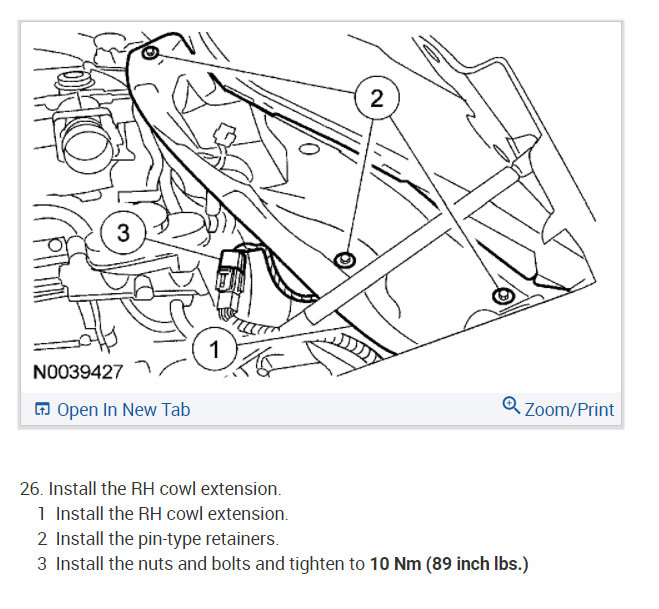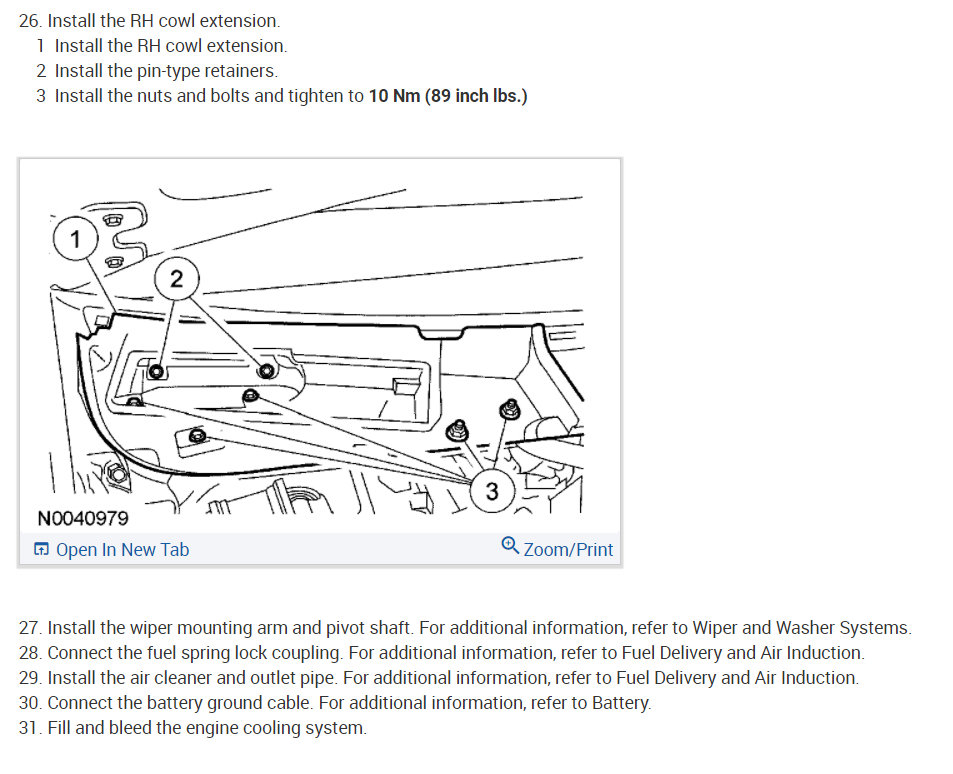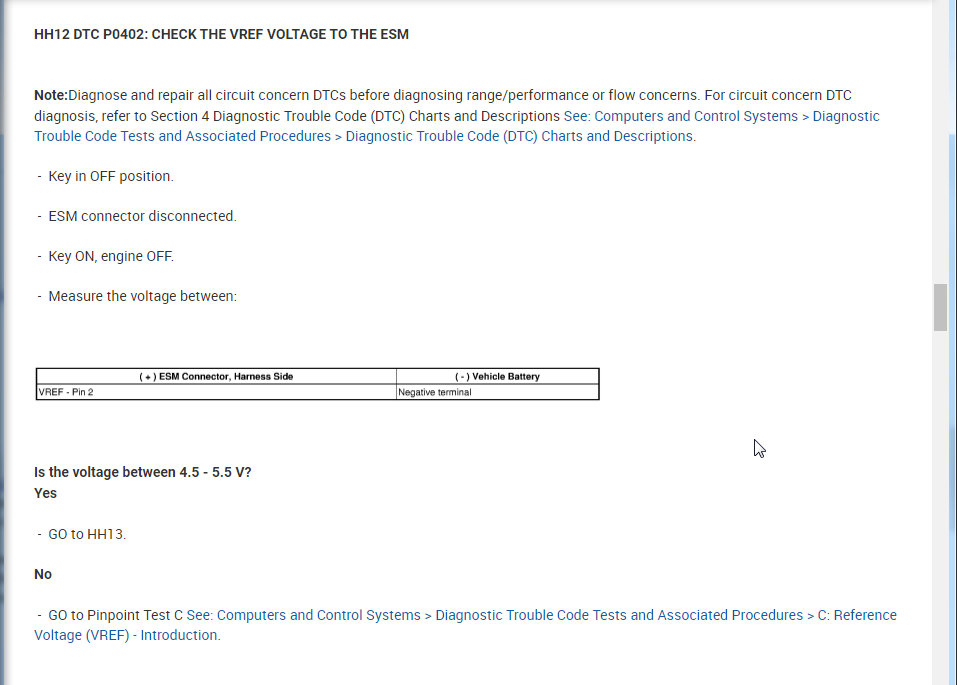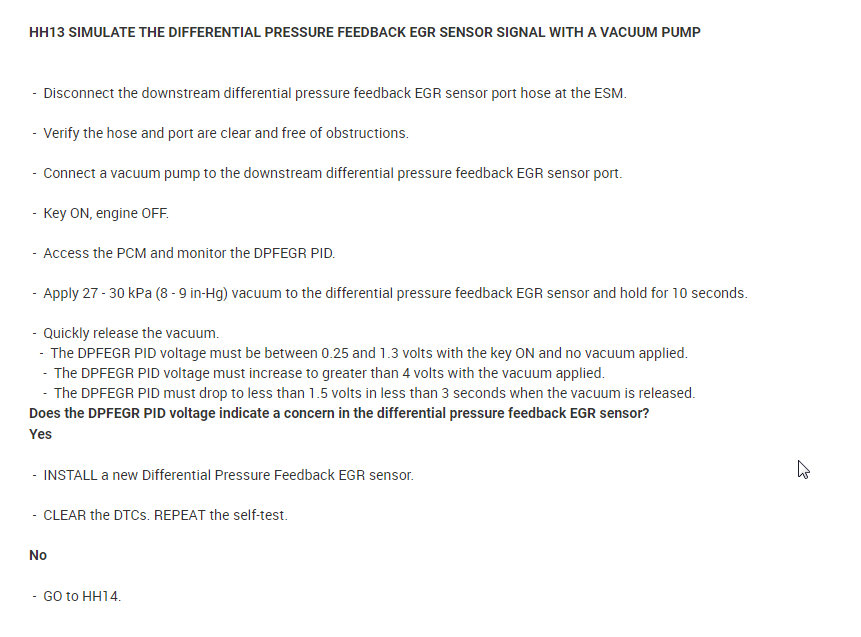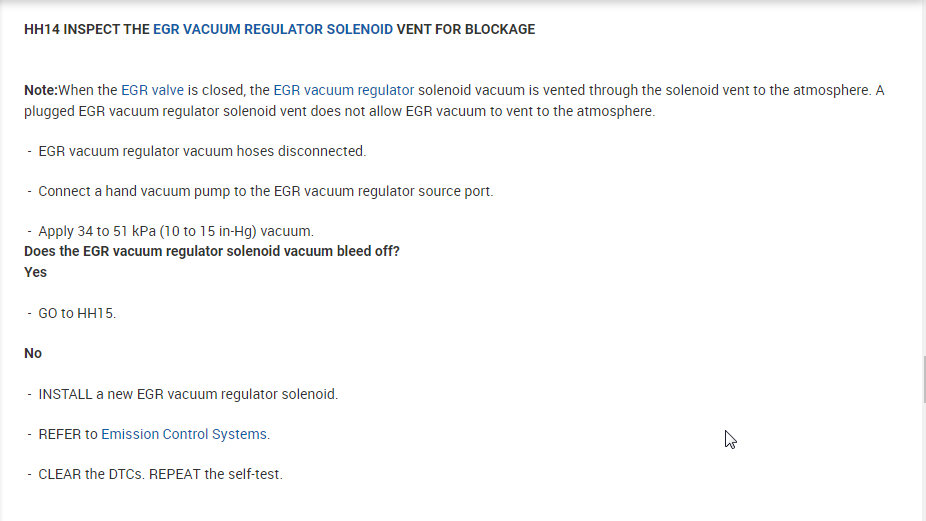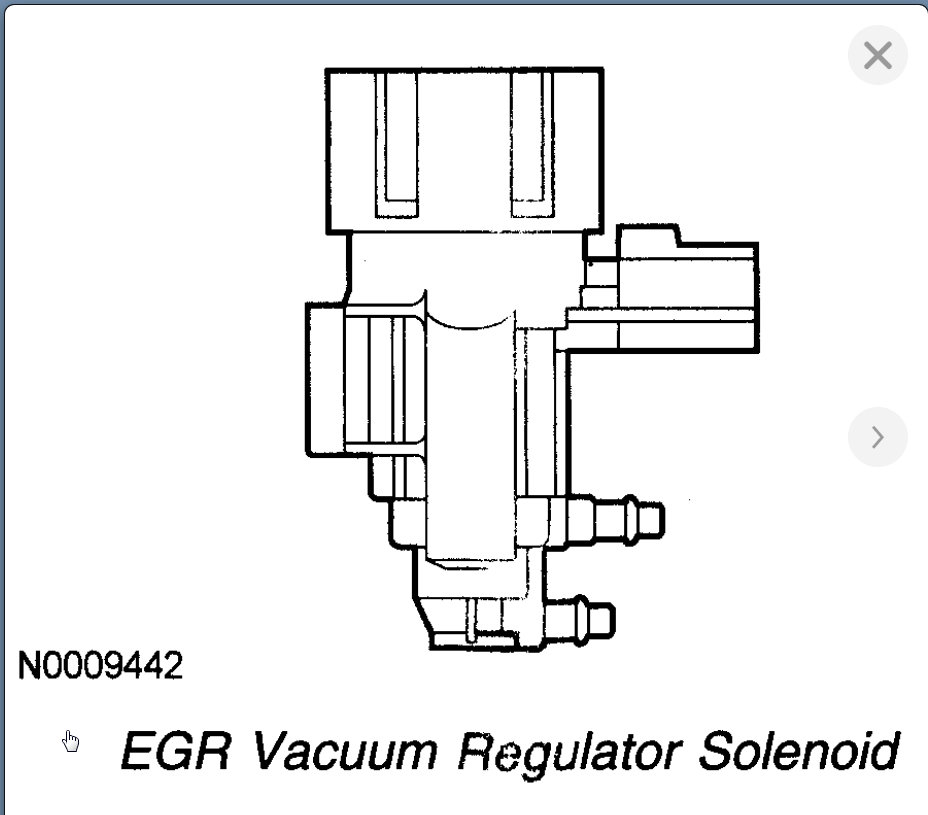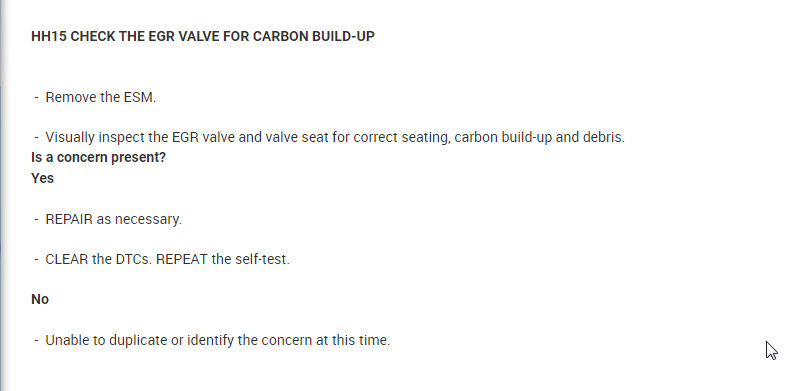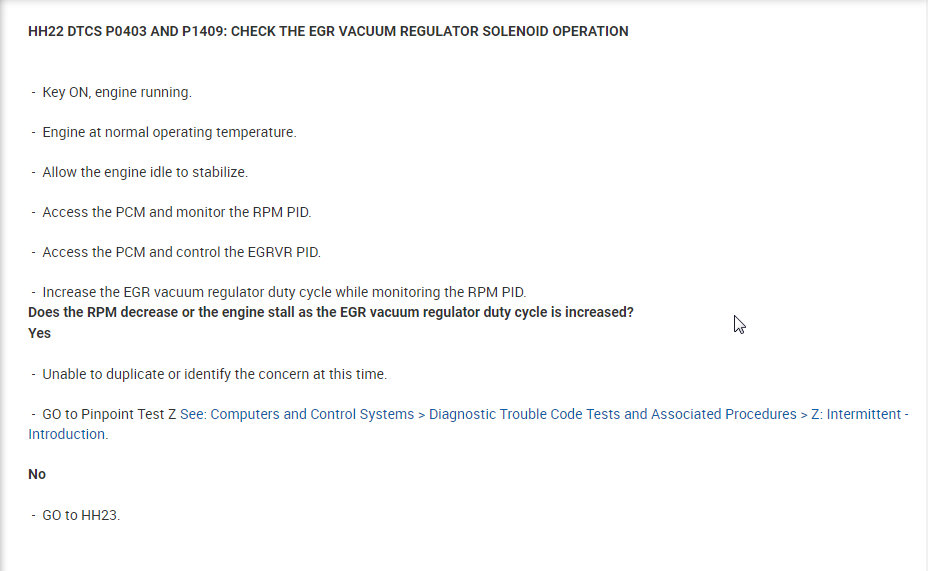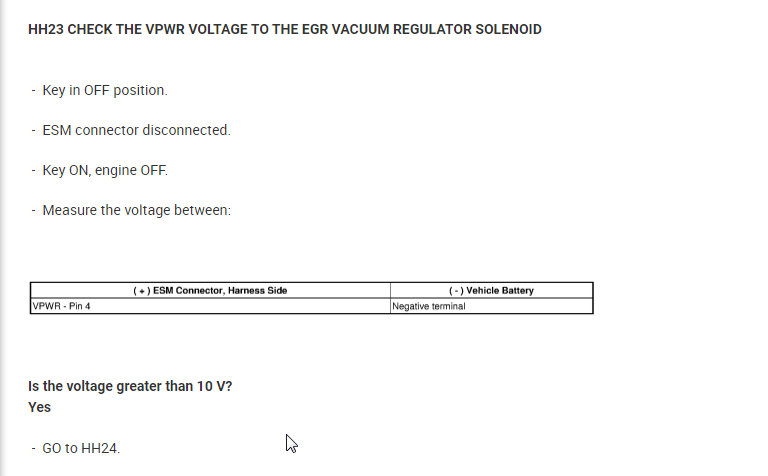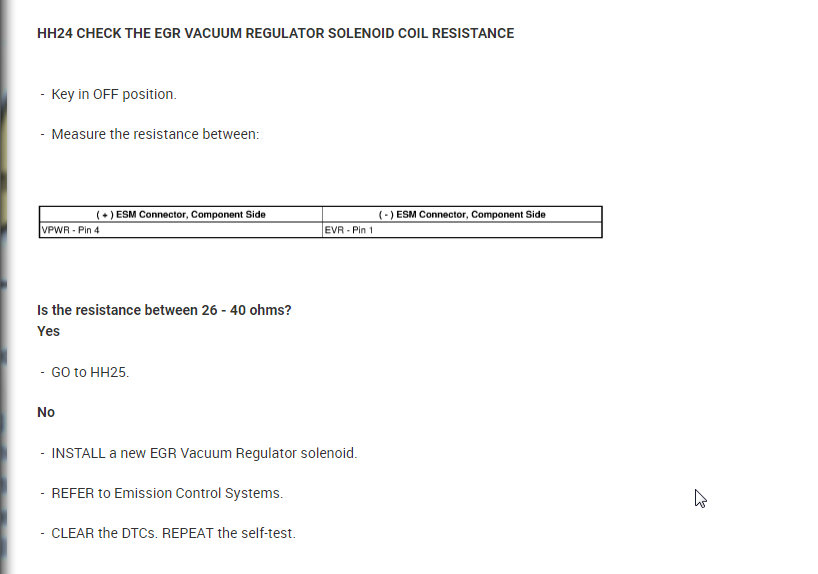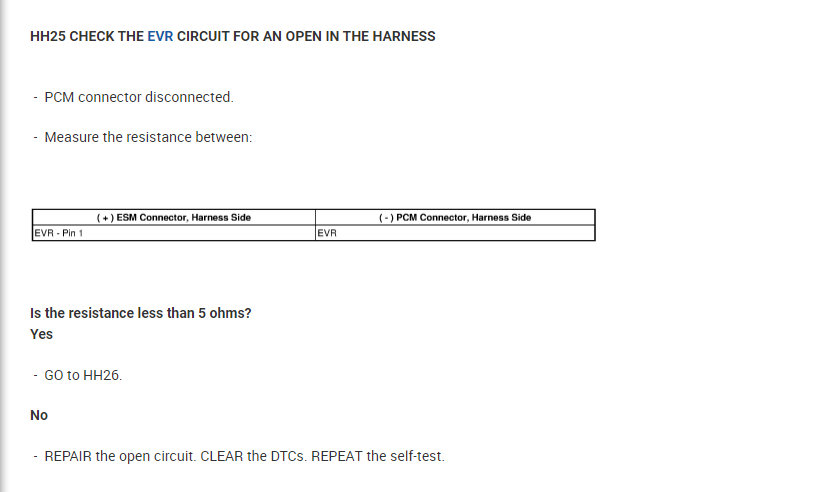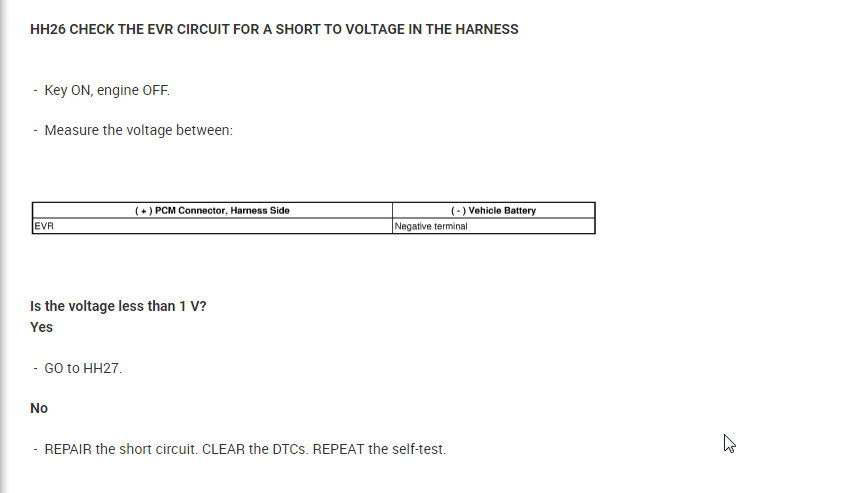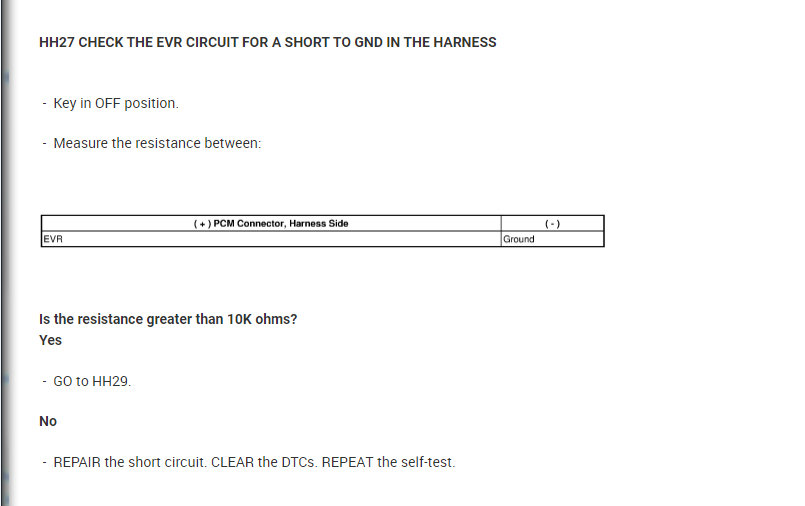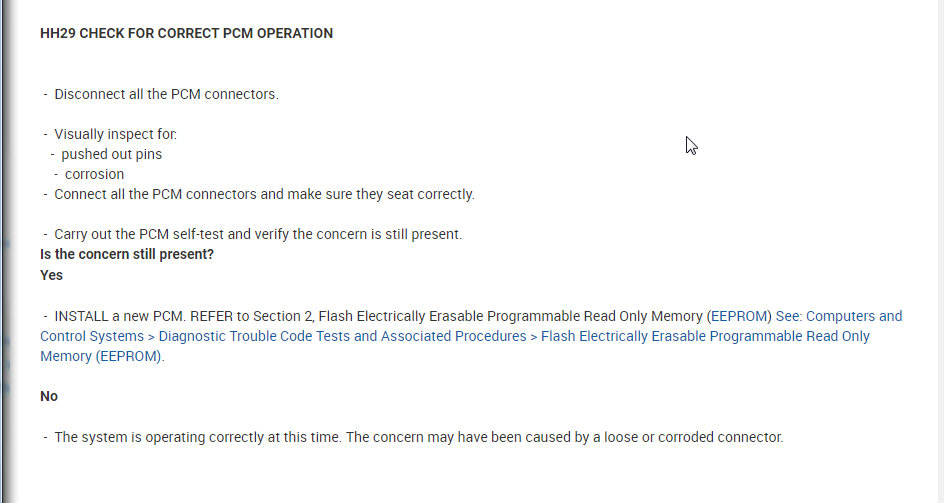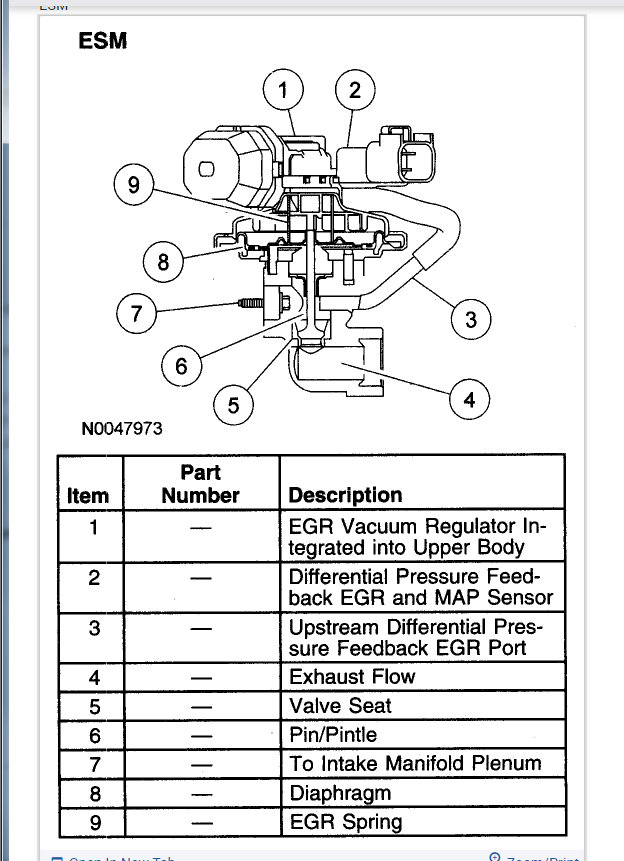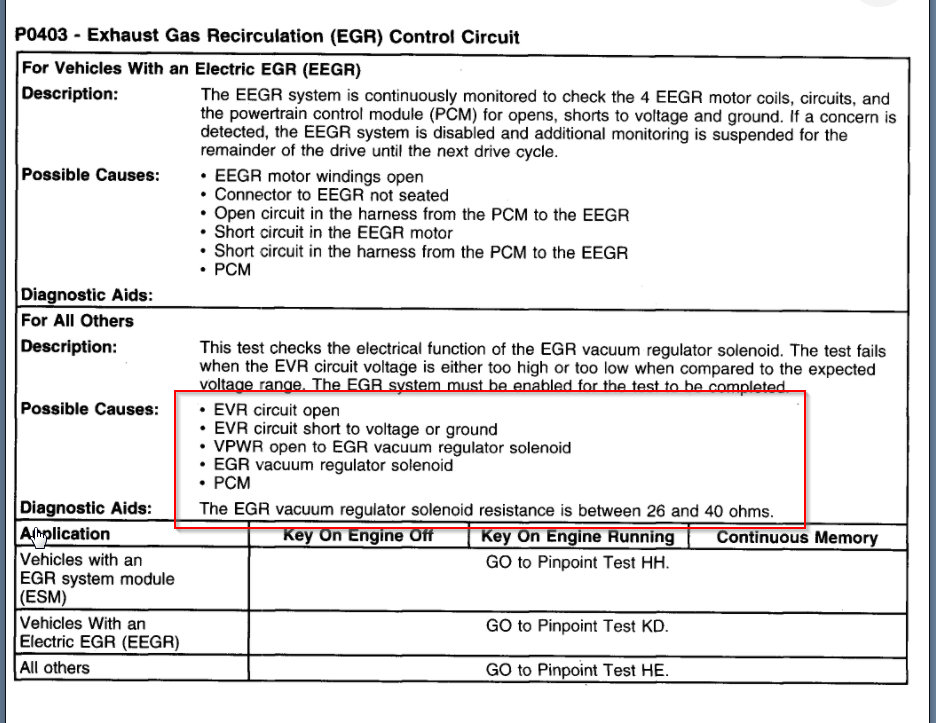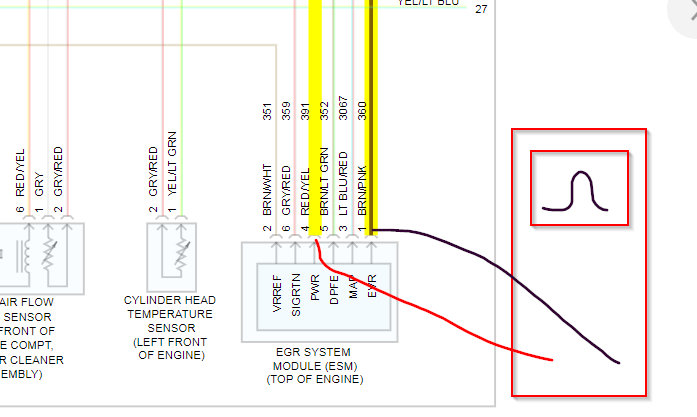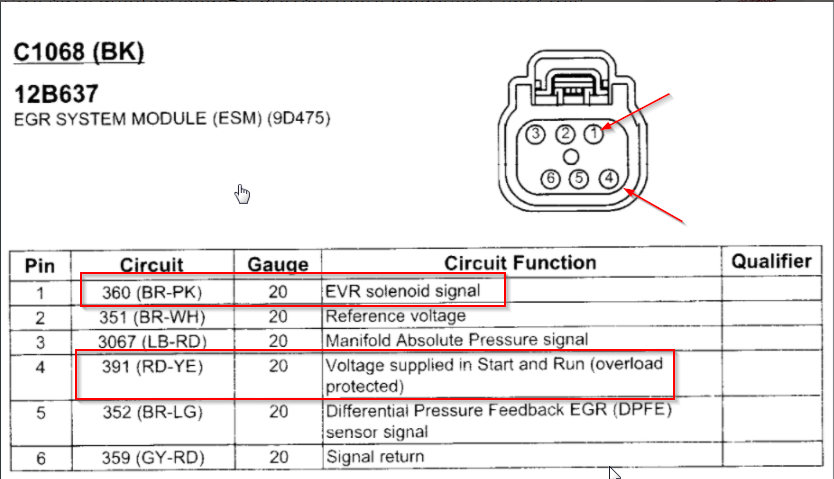Sorry if that did not help. Unfortunately we have no way of knowing what your level of expertise is so we can only supply the information and answer the questions as best as possible. Unfortunately not all vehicle issues are as simple as putting a part on it and do require diagnostic work to figure it out.
So let's walk through this testing to see if we can figure something out. Your codes are 0402 and 0403. As you can see on step one that sends you to HH12 for the P0402 and HH 22 for P0403.
Let's start with HH12.
HH12 tells you to disconnect the EGR module (ESM) and check voltage on pin 2. Based on what you said it was 4.9v. It then asks you if it is between 4.5-5.5v. The answer is yes so you go to HH13.
HH13 says to monitor the data in the PCM with a scan tool. If you don't have that then you can monitor the voltage on the DPFE and get the same info. You will need a vacuum gauge/hand pump so that you can pull it into a 8-9 inch of mercury vacuum as it asks. Let's say it passes that and you move to HH14. If it did not then you replace the DPFE.
HH14 asks you to check for a blockage in the EGR regulator solenoid. Again, you need the vacuum hand pump again to pull it into a 10-15 in-hg vacuum. If this does not bleed off then you need a new EGR vacuum regulator solenoid. Let's say that passed and you move onto HH15.
HH15 is asking you to inspect the EGR valve for carbon build up. If you find it, you can clean it or replace it. If there is none then the issue is not currently present.
For P0403 you start at HH22. This is asking you to check the operation of the EGR by using a scan tool. You don't have one so let's assume it does not stall when you perform this test because if it does then the issue is not present at this time so let's assume it is currently broken so it would answer this question as "No" and you go to HH23.
HH23 is asking you to check voltage from the EGR module (ESM) for voltage and based on your reading of 12 volts, you would answer yes that it is greater then 10v. Go to HH24
HH24 needs you to check the EGR coil and you do this by disconnecting the connector and measure resistance between pin 4 and pin 1. What is the resistance reading? Is it between 26-40 ohms? If it is not then you replace the EGR vacuum regulator solenoid. Let's assume it is and you go to HH25
HH25 is asking you to check the harness for an open circuit. You need to disconnect the EGR Solenoid and the PCM and check resistance on that wire. The chart shows where to put your leads but basically you need to be on both ends of the wire. Let's assume it is less then 5 ohms. If not you have an open or high resistance and need to repair that wire.
HH26 is asking to check the harness for a short to voltage. Put the leads as it says in the chart. Repair the wire if there is more the 1 volt on it.
HH27 is asking to test for a short to ground. Again put your leads where it asks and do you have more then 10k ohms of resistance? If yes, then you have no continuity to ground which is good. If you do then you need to repair that wire. Proceed to HH29 if it passed.
HH29 is telling you to inspect the PCM for any visual issues like corrosion or pin/terminal issues. If not, put a PCM in it.
So this means you could just replace these parts and if that does not fix it you will need to replace the wiring harness.
1. DPFE
2. EGR regulator solenoid
3. ESM
4. PCM
5. Wiring issue
Again, based on these codes I cannot just tell you what parts to replace. We must go through this testing in order to figure out what to do or your guess is as good as mine. Hopefully this helps.
Images (Click to make bigger)
Thursday, October 22nd, 2020 AT 1:34 PM
